This is the 16th post in a series of Nikon D850 tests. The series starts here.
[Horshack asked some questions about this post that caused me to go back and look at the EXIF data for the captures. When I did that, I realized that I’d gotten the sign of the PDAF bias settings wrong. I’ve fixed all that. Thanks,. Horshack, for keeping me honest. The corrections do not change the general sense of the post, however.]
All of the Nikon DSLRs that I’ve used use phase-detection autofocus (PDAF), and they provide a way to tune the behavior of the PDAF for particular lenses. This AF fine-tuning allows systematic biases to be compensated out. Unfortunately, it’s a one-size-fits-all solution, with data stored for each lens, and the same bias used for all distances and apertures for that lens. We’ve seen in this post that there are variations in PDAF bias with aperture (in spite of, or maybe because of, the way that it attempts to correct for focus shift caused by spherical aberrations).
I performed a series of tests with the Nikon 58 mm f/1.4 lens wide open at 3 meters with my three-plane target:
I told the camera to focus on the center crosshatch, using AF-S, single servo, and the small spot centered on the crosshatch:
I tested with the AF fine tuning bias set to -5, -2, 0, +2, and +5.
I used this protocol:
- Nikon 58 mm f/1.4 on D850.
- ISO 64
- AF-S, single servo mode
- Release priority: focus
- Aperture exposure mode
- f/1.4 through f/4 in whole stops
- 32 exposures at each f-stop
- Nikon remote release, half-pressed until confirmation observed
- Lens ring racked between shots
- Wescott LED panels set to 5500 K.
- Target distance, 3 meters.
I measured the MTF50 for the three raw color planes using dcraw in document mode, MTF Mapper, Matlab, and Excel.
The vertical axis is MTF50 (a proxy for sharpness) measured in cycles per picture height. The bias that was set in the camera is plotted as the horizontal axis. The average MTF50 of the 32 exposures at each bias setting is the blue line. The best and worst of each series is also shown. It looks like a bias of -2 produces the sharpest results for the red raw channel.
With the green channel, which is more important than the red to image sharpness, a bias setting of 5 produces the best results.
The blue channel is the least important to sharpness, and also seems to want a positive bias setting.
If we look at the results for each of the three planes of the target for the +5 setting, this is what we see:
For the red channel, the far part of the target is very slightly better than the middle plane. Sigma is another word for standard deviation.
With the bias set to -5, the green channel peaks in the middle plane, as it should.
The blue channel looks a lot like the red one, which is a surprise.
But do we really want to set the bias to +5 if we’re going to stop the lens down a bit?
Here are plots from yesterday’s post with the bias set to zero, for the green channel at f/1.4 (as above), f/2, and f/2.8:
This confirms what we’re seeing above. The camera wants a positive bias.
But now zero looks about right.
And zero also looks about right for f/2.8.

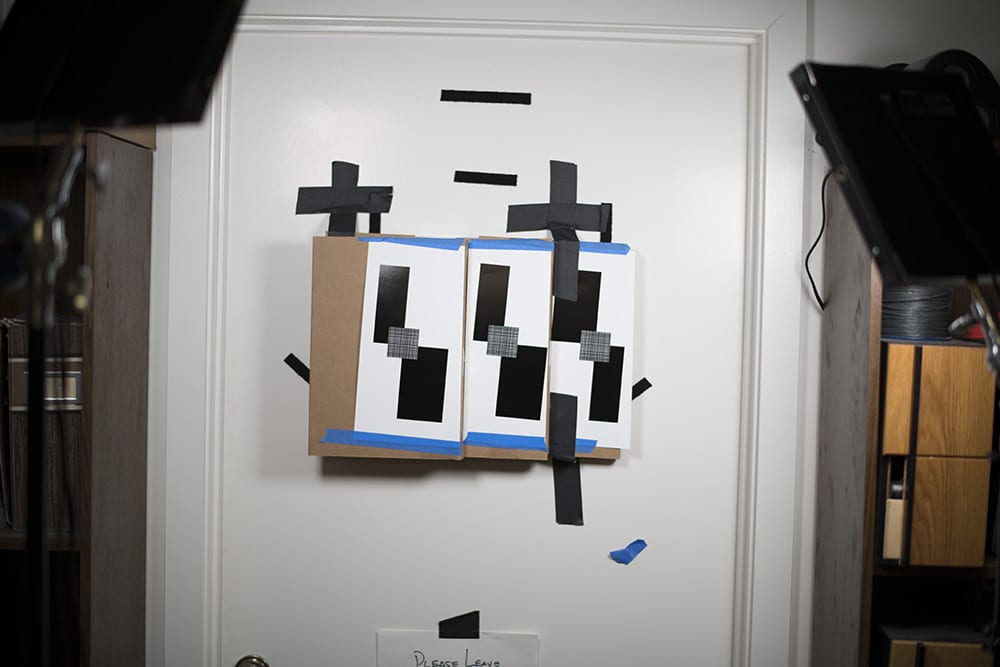
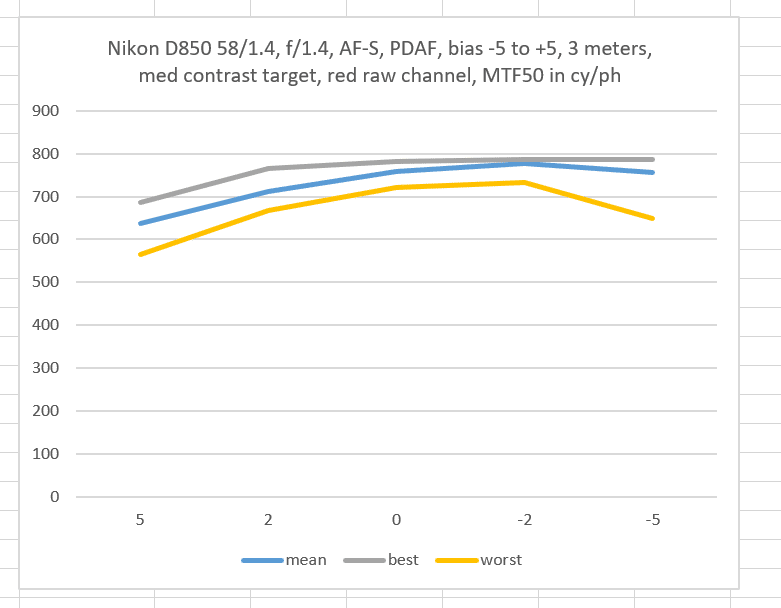
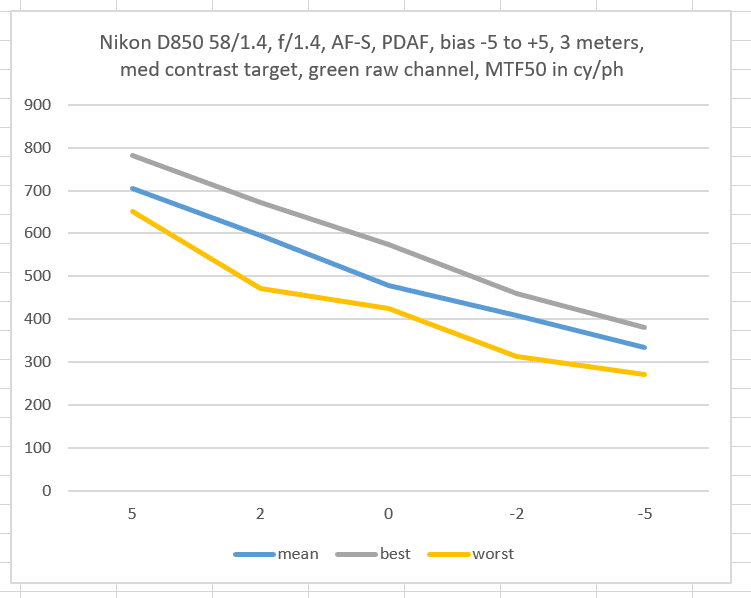
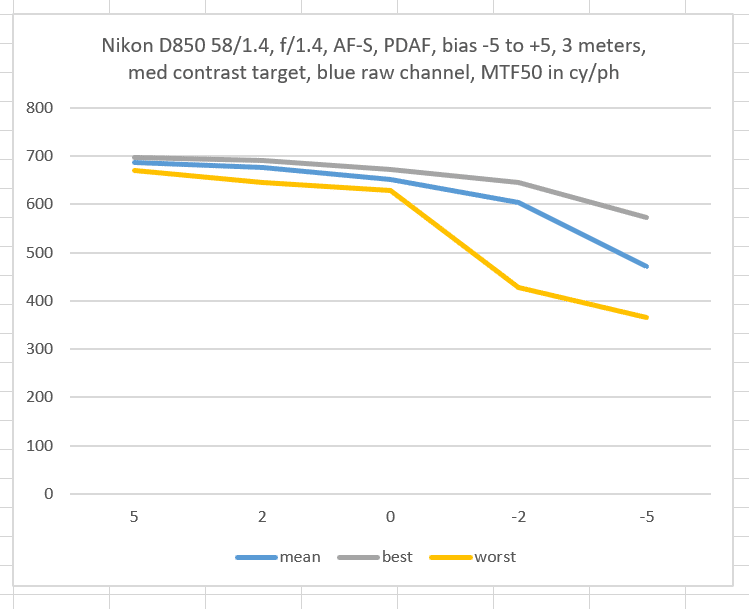
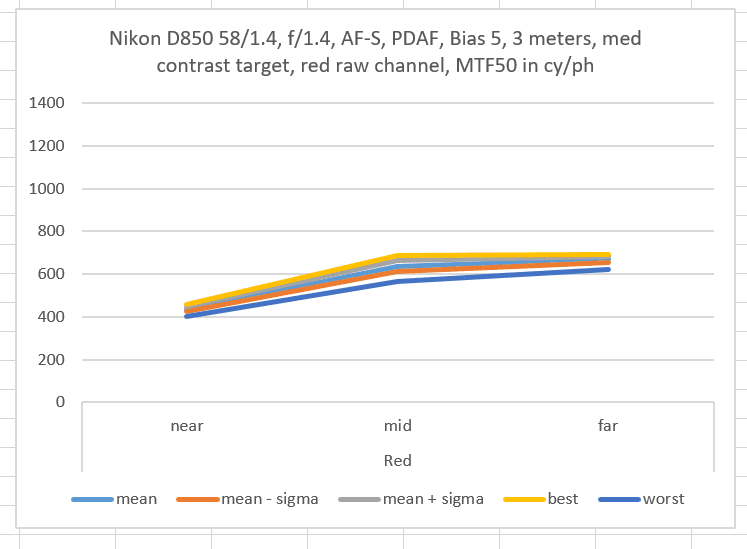
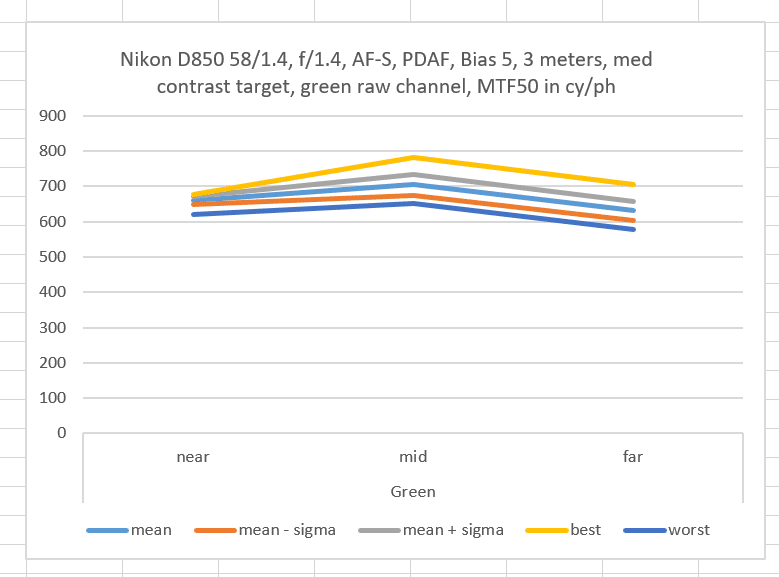

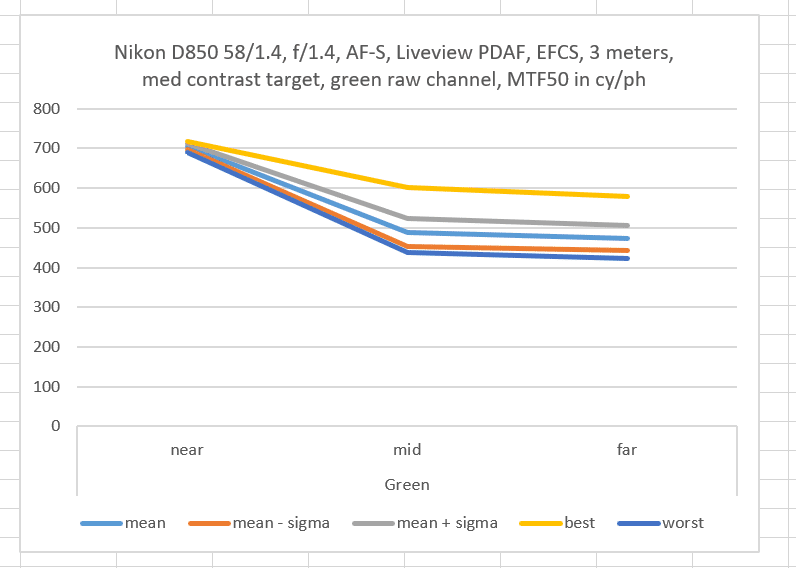
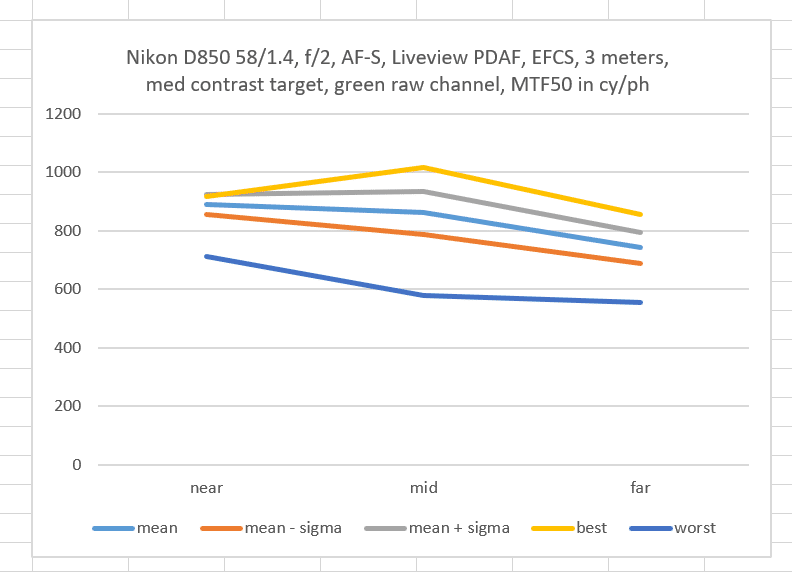
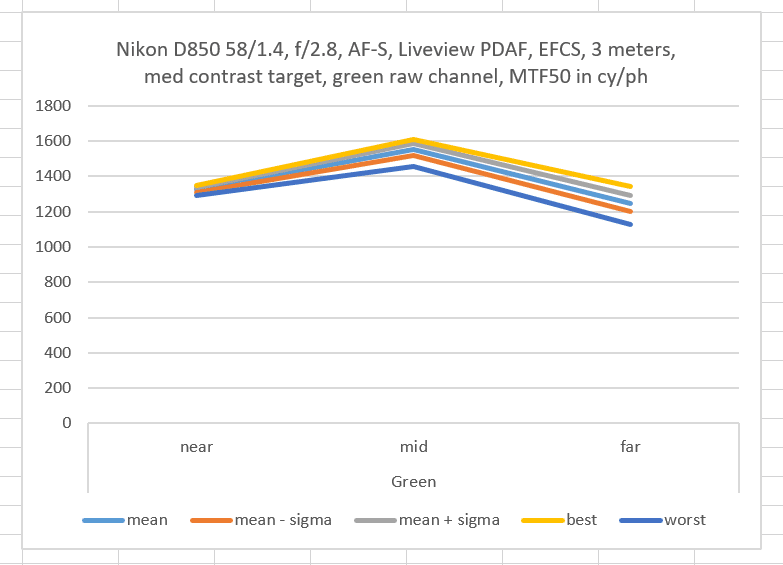
Jack Hogan says
Focus shift in action. How did the rest of the f-numbers look? Did you say that Nikon camera/lenses are supposed to compensate for focus shift automatically? By focal length and f-number?
JimK says
Here’s what Marianne Oelund had to say about the 105/1.4 in a DPR post:
“If you are planning on using the lens primarily at f/1.4 to f/2 (as I am) then the focus shift shouldn’t be an issue. However, if you need to move back and forth between the widest apertures, and moderate ones, AF will be problematic, especially with camera bodies released prior to 2014 (starting that year, Nikon incorporated focus-shift compensation into the AF system – without telling anyone, of course).”
That’s all I know about the camera’s compensation for focus shift.
Here’s the DPR thread:
https://www.dpreview.com/forums/post/58262673
JimK says
“How did the rest of the apertures look.”
Didn’t test with changing the bias in camera. Here are results at f/1.4 through f/4 with the bias set to 0:
http://blog.kasson.com/the-last-word/d850-581-4-pdaf-bias-at-various-apertures/